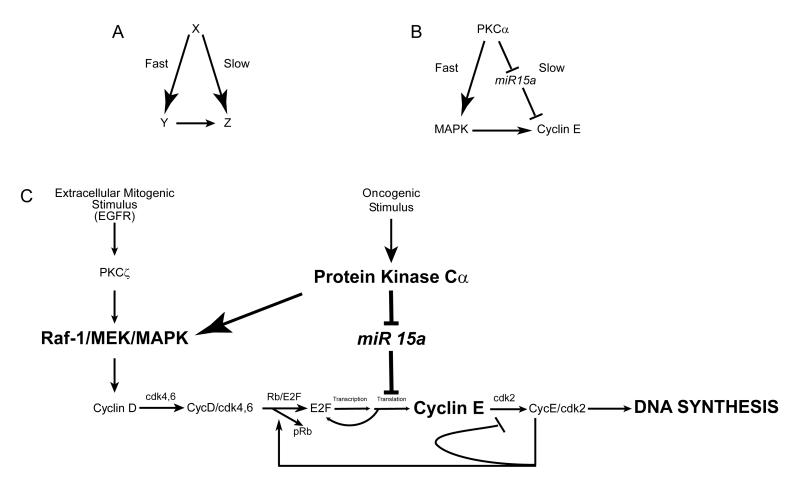Figure 6.
Schema illustrating a feed-forward loop initiated by PKCα that regulates DNA synthesis. A) Illustration of a typical feed-forward loop with X as the initiation signal that stimulates Y activation rapidly and Z activation slowly. Y also stimulates Z resulting in maximal activation of the network. B) The feed-forward loop involves PKCα that activates MAPK as well as cyclin E translation via inhibition of mir-15a. Note that the “slow” arm of the loop involves negative regulation of a suppressor resulting in forward flow. C) Specific components of the feed-forward loop. Normal G1-S phase transition in response to mitogenic extracellular stimuli such as EGF induces activation of the Raf/MEK/MAPK cascade. We have previously shown that PKCζ mediates EGF activation of MAPK (2). Here we show that PKCα can also activate MAPK. This signaling cascade leads to expression of cyclin D complexed with the cyclin-dependent kinases cdk 4/6 followed by induction of cyclin E complexed with cdk 2; each cyclin-activated kinase in turn phosphorylates Rb. In concert with this, PKCα activity induced by oncogenic stimuli deregulates cyclin E expression by suppressing miR-15a, an inhibitor of cyclin E. The net effect of PKCα activation is to trigger a positive feedback loop resulting in upregulated cyclin E expression and DNA synthesis.

